Rocks and Fish; Rockport and Gloucester (Part Four); More Street Scenes; July 2019
"Street photography" implies candid or quasi-candid images of people seen randomly in public spaces, sidewalks, streets, parks, and so on. The images are typically not consensual in the sense of explicit permission to photograph. Sontag broadly characterized them as voyeuristic and invasive. Think of Garry Winogrand's work, for example; his invasions were at least in good humor.
For me, a better term is "street scene" photography, because it more inclusively covers everything a curious person might want to photograph while wandering around: people, dogs, store fronts, abstracted shapes and colors, indeed, anything interesting to a photographer motivated by whimsy and curiosity. (Winogrand famously said he photographed things to see what they looked like photographed. The comment is both intriguing and revealing.) A more rigorous, structured approach might seem to be more admirable organizationally. Thus, one might begin the day with a specific goal: "Today I will photograph only people riding bicycles." Or, "only black dogs with white paws." Or, "only people facing right and wearing hats." But that would be like entering the line for a sumptuous buffet with the meager intention of taking only the carrots while ignoring the roast beef, salmon, cheeses, truffles, artichokes, and meringue.
A more whimsical approach is what a photographic flâneur might do, if true flâneurs carried cameras or deigned to switch from observing mode to recording mode. Of course flâneurs do record what they see, at least mentally and often journalistically. And wandering around is generally regarded as an honorable way to see things, especially in cities, and even more especially in Paris, thanks to Baudelaire. Over the past 150 years flânerie has been in and out and again in societal favor, depending on whether one wants to emphasize notions of keen observation or lazy indolence.
Does flânerie imply remaining disengaged or emotionally distant? You can enjoy a game of boules without trying to break into the game. Would a true flâneur in Paris ever enter into a given scene or event, or, for that matter, coldly record it with a camera? In Baudelaire's day, cameras were far too big and clumsy to tote while strolling the Tuileries or the Champs-Elysees. Even before small cameras (Leica, Contax) arrived in the late 1920's, keen observers like Atget were recording Paris photographically. But they weren't wandering observers, casually strolling sidewalks and gardens. Was Cartier-Bresson a true flâneur, who simply tasted whatever was being served, or was he far more engaged, targeting the decisive moment, anticipating and conceiving the image even before his subjects knew what they were about to do? Can a photographer ever truly qualify as a flâneur, or is lifting the camera and recording something a disqualifier?
Whatever. Whether one would qualify as a card-carrying flâneur is ultimately irrelevant to the photographer guided by whimsy and curiosity. In Rockport and Gloucester I wasn't limited to people riding bicycles or carrots.
Gloucester sidewalk tableau, with vacant chair:
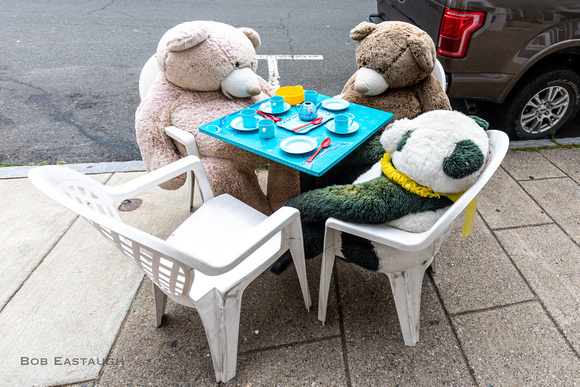 EF4A5608
EF4A5608
The bait taken:
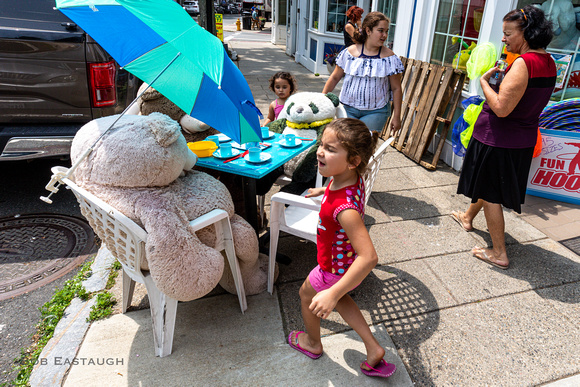 EF4A5627
EF4A5627
Passports, a nourishing and nifty Gloucester eatery, has striking radiators. The attendant: "A lot of people photograph that radiator."
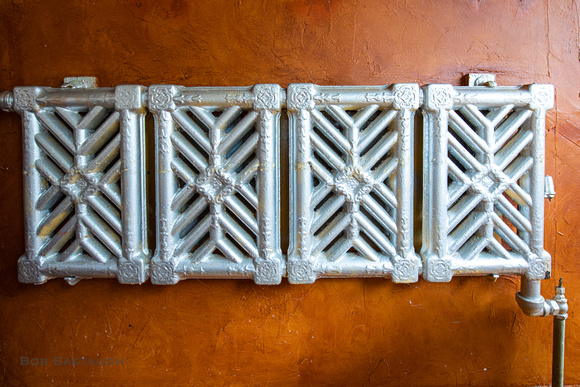 EF4A5612
EF4A5612
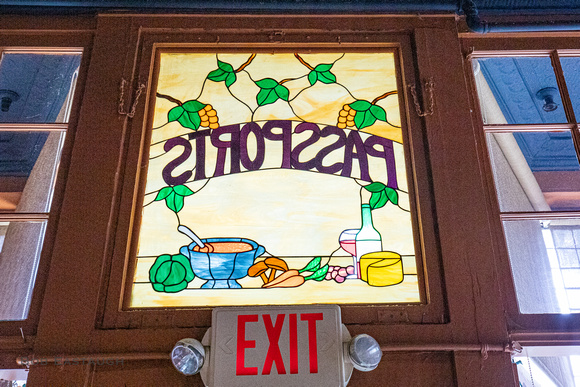 EF4A5619
EF4A5619
The Cape Ann museum has excellent historical displays and some nice paintings. And now it has this newly installed sea serpent at the entry.
 EF4A5604
EF4A5604
Dory love. Pure shape. Pure color. Gloucester waterfront near the remaining marine railway and the Dory Shop.
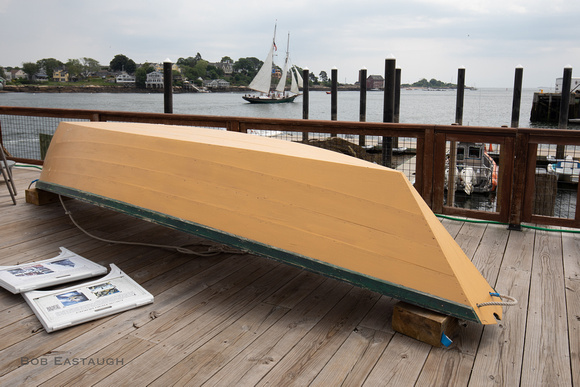 EF4A5656
EF4A5656
Found objects: ship's wheel, bollard, granite blocks, and behind, the marine railway with its resident schooner.
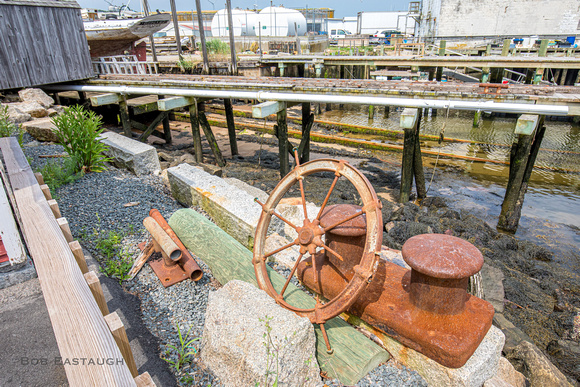 EF4A5680
EF4A5680
In Salem, a town with a past, this foreboding statute loomed over tourists who were probably visiting the nearby witch-trial museum. But it turns out Roger Conant was actually a benign local figure despite the rampant coastal small-town animosities, and he died in 1679, years before the infamous witch trials later promoted by more malign figures like Cotton Mather. Turns out that witchery really was fake news. So sad, alleged witches.
 EF4A5978
EF4A5978
"A" is for A-Frame. Hoist on Bearskin Neck dock, Rockport
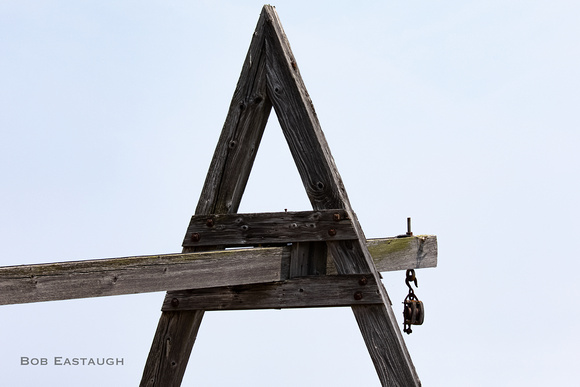 EF4A4852
EF4A4852
RBG presides. Bearskin Neck shop window, Rockport
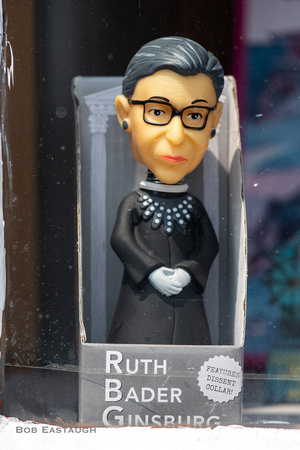 EF4A4896
EF4A4896
The Cape Ann museum contains very good recent paintings, as well as a large collection of Fitz Henry Lane's seascapes.
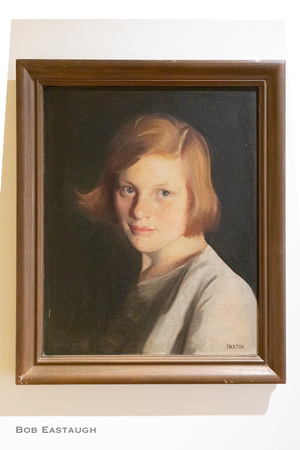 EF4A5583
EF4A5583
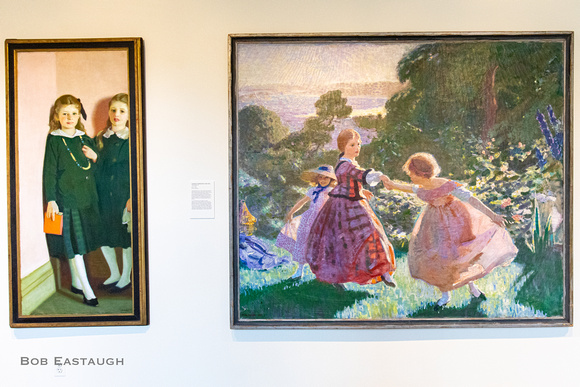 EF4A5586
EF4A5586
Fitz Henry Lane example (taken from Wikipedia site). The originals are very fine.
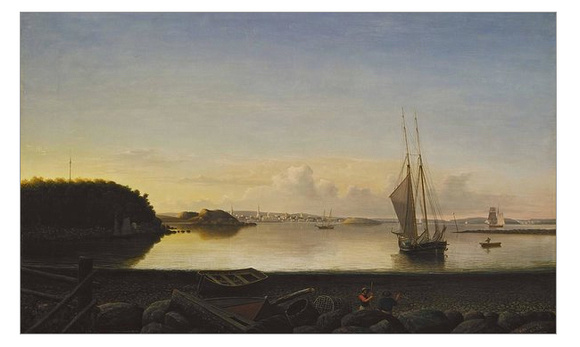 Screen Shot 2019-10-05 at 3.52.21 PM
Screen Shot 2019-10-05 at 3.52.21 PM
"Unum?" Maybe, maybe not. Rockport
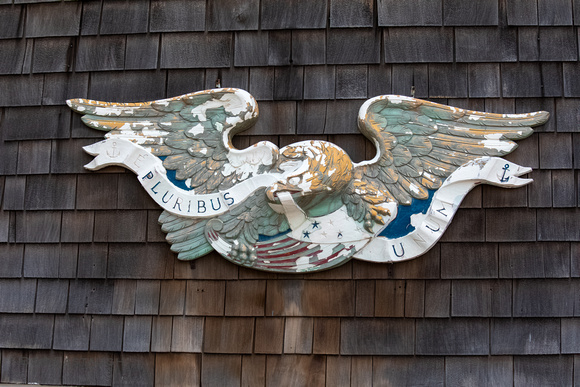 EF4A4899
EF4A4899
Gloucester's public buildings are cleanly ornate.
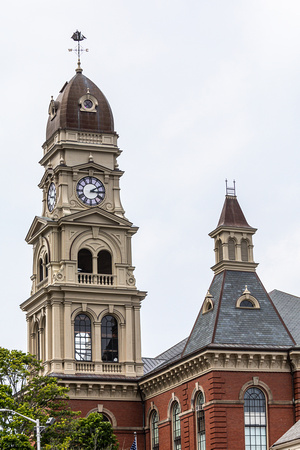 EF4A5738
EF4A5738
 EF4A5746
EF4A5746
Comments


After a lifetime of mainly expressing myself with words, my postings here will mainly rely on images. They will speak for themselves to some extent, but I'll usually add a few comments of explanation. I've taken photographs for decades, since the 1950's, inspired in part by my father's photographic skill. Four years of photo assignments and quality darkroom time eventually gave way to decades of casual and family picture-taking. I re-immersed myself when I left film and turned to digital.